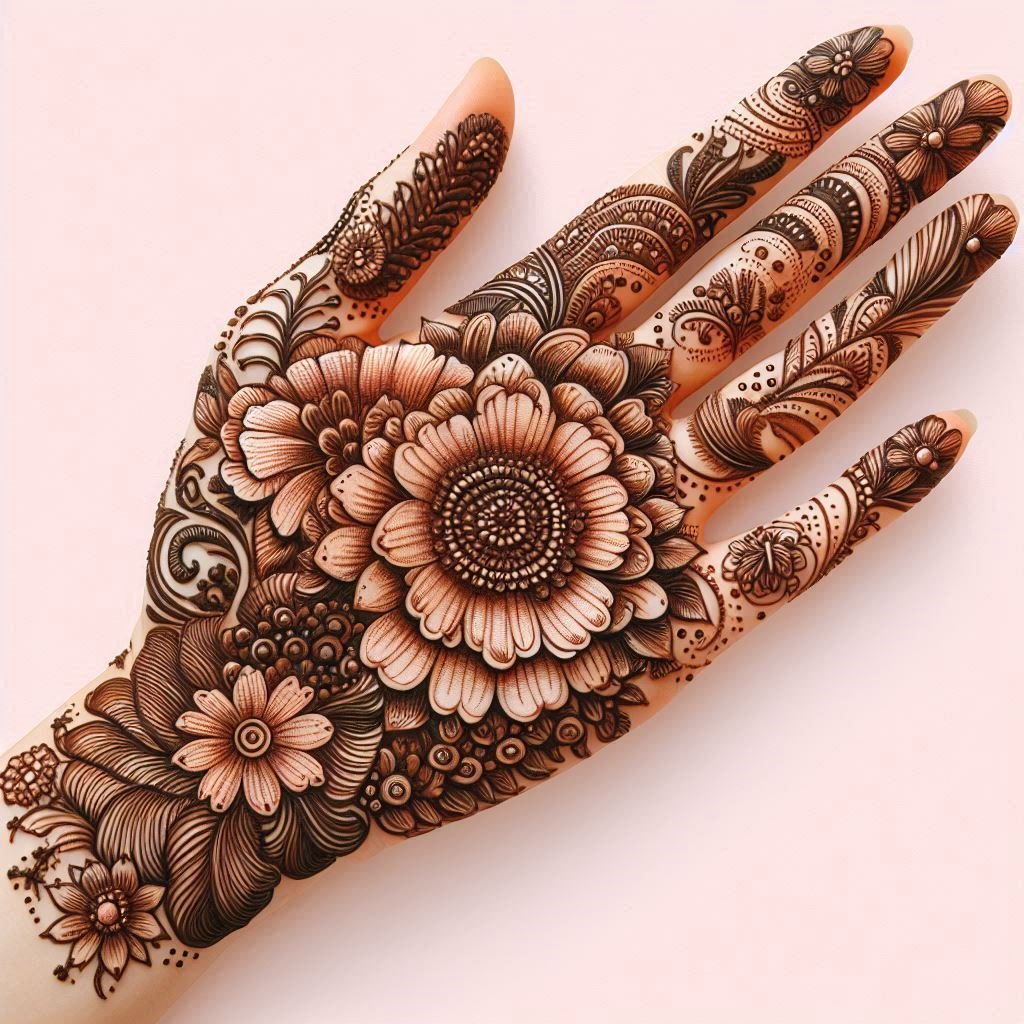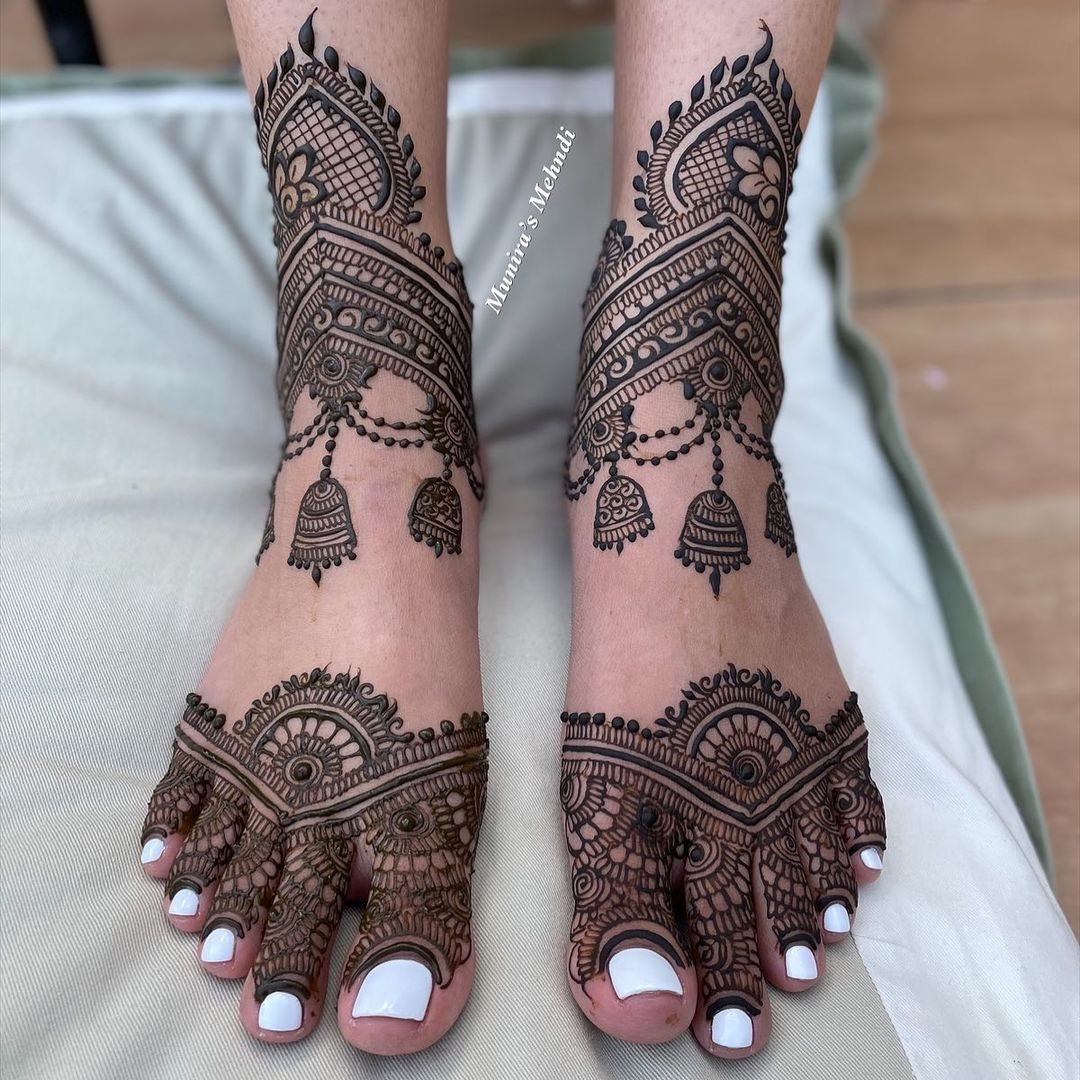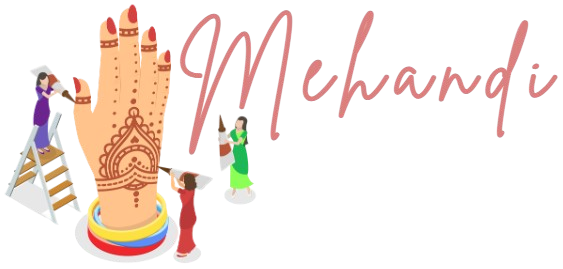Mehandi, also known as henna, has been a part of traditional art forms in South Asia and the Middle East for centuries. With its natural charm and intricate designs, mehandi has evolved into a creative expression used for weddings, festivals, and other special occasions. From basic mehandi design patterns to elaborate bridal styles, there’s something for everyone.
In this article, we’ll explore the different types of mehandi styles, focusing on front hand mehandi, legs mehandi design, back mehandi, and the popular mehandi dulhan designs.
The Beauty of Front Hand MehandiThe front hand mehandi style is often the focal point for many women, especially during weddings and festivals like Diwali or Eid. This area gives ample space for creativity and details.

Popular Patterns for Front Hand:
Floral vines and paisley motifs
- Mandala-style central designs
- Jewelry-style chains and finger tips
Here’s a quick comparison of popular front hand styles:
| Style Type | Complexity Level | Ideal For |
| Floral Patterns | Easy | Casual Events |
| Arabic Style | Moderate | Functions/Fests |
| Dulhan Motifs | High | Bridal/Wedding |
The front hand mehandi trend is becoming more minimal yet elegant. Many modern brides prefer symmetrical and story-telling patterns that extend from fingers to the forearm.

Legs Mehandi Design: Stepping into Tradition
While arms and hands are often prioritized, legs mehandi design holds a special place in traditional weddings. In Indian and Pakistani cultures, the bride’s feet are adorned with beautiful mehandi on the wedding day.

Types of Legs Mehandi Designs:
- Anklet-style bands
- Intricate mandala on the center of the foot
- Net and geometric patterns for the toes
| Design Type | Where Applied | Popularity |
| Mandala Foot Motif | Center of feet | Very Popular |
| Mesh Toe Art | Across toes & edges | Traditional Look |
| Kalash or Doli Art | Ankles & side feet | Bridal Specific |
The legs mehandi design enhances the overall bridal look and complements the jewelry and outfit worn on the lower half.

Back Mehandi: Grace at Every Turn
Many overlook the charm of back mehandi, but it’s one of the most photogenic and expressive areas for art. From circular mandalas to diagonal floral chains, back mehandi designs bring out graceful patterns on the hands’ reverse.
Key Features of Back Mehandi:
- Often minimalistic but sharp
- Perfect for engagement or Karva Chauth
- Works well with rings and nail art
You can pair a back mehandi style with a contrasting front hand mehandi to create a complete look. Try combining lace-like designs with floral finger coverage for a trendy yet traditional vibe.

Exploring Basic Mehandi Design for Beginners
Not everyone has the time or skill to apply complex patterns. That’s where basic mehandi design comes into play. These designs are simple yet impactful, perfect for beginners or those looking for a quick fix.
Top 3 Basic Mehandi Styles:
- Dot Chains and Leaves: Simple dots linked with leafy trails.
- Basic Circle Design: One mandala circle on the palm.
- Finger Tips Only: Patterned fingers with clear palms.
| Type | Skill Required | Suitable For |
| Dot and Leaf Pattern | Beginner | Small Gatherings |
| Circle Palm Motif | Beginner | Everyday Wear |
| Finger Design Only | Beginner | Casual Outings |
These basic mehandi design options are not only easy to draw but also take less time to dry, making them great for kids or first-time users.

The Grandeur of Mehandi Dulhan Styles
When it comes to bridal mehandi, nothing beats the elaborate mehandi dulhan styles. These designs are heavily detailed and often tell a story. From groom and bride portraits to peacocks and palanquins, every symbol holds cultural meaning.

Elements of Mehandi Dulhan Patterns:
- Bride and Groom figures
- Lotus, elephants, and doli patterns
- Hidden names or messages
Mehandi dulhan designs usually cover the full arm and feet and require a professional artist. It can take anywhere from 3 to 6 hours depending on the detail and coverage.
| Element Included | Symbolism |
| Bride/Groom Faces | Union of Love |
| Lotus Motifs | Purity & Blessing |
| Palanquin Art | Cultural Tradition |
Conclusion
Mehandi continues to be a timeless form of body art that connects us to tradition while allowing room for innovation. Whether you go for a basic mehandi design or a lavish mehandi dulhan style, each stroke tells a story of beauty and emotion.
Explore Mehandi’s Elegance: Designs for Any Occasion
For ages, traditional art styles in South Asia and the Middle East have used mehandi, also called henna. Mehandi has developed into a creative expression utilized for festivals, weddings, and other special occasions because of its natural attractiveness and elaborate designs. There is something for everyone, ranging from simple mehandi design patterns to intricate bridal styles.
The various mehandi styles will be discussed in this article, with particular attention paid to the well-liked mehandi dulhan designs, back mehandi, legs mehandi, and front hand mehandi.
Front Hand Mehandi’s BeautyFor many ladies, the front hand mehandi style is the main attraction, particularly at weddings and holidays like Eid or Diwali. There is a lot of room here for details and creativity.
Popular front-hand patterns include paisley designs and floral vines.
• Central designs in the style of Mandalas
• Chains and finger tips in the manner of jewelry
A brief comparison of common front hand styles is provided below:
Complexity Level and Style Type: Perfect for Floral PatternsSimple, informal gatherings
Arabic-styleModerate Events/Festivals
Dulhan High Bridal/Wedding Motifs
The front-hand mehandi style is growing more understated yet sophisticated. Symmetrical and narrative patterns that go from fingers to the forearm are popular among contemporary brides.
Designing Leg Mehandi: Embracing Tradition
Leg mehandi design has a specific position in traditional weddings, even though arms and hands are frequently given priority. Beautiful mehandi is applied to the bride’s feet on the wedding day in Pakistani and Indian cultures.
Leg Mehandi Design Types:
• Bands in the anklet style
• A detailed mandala in the middle of the foot
• The toes’ net and geometric designs
Type of Design Where Popularity Is Applied
Mandala Foot Motif: Foot CenterVery Well-liked
Mesh toe art on the borders and toesConventional Style
Bridal-specific ankles and side feet with kalash or doli art
The mehandi motif on the legs adds to the overall wedding appearance and goes well with the lower half’s jewelry and attire.
Mehandi’s Back: Elegance at Every Step
Back mehandi is one of the most picturesque and expressive art forms, but many people fail to appreciate its allure. From diagonal floral chains to circular mandalas, back mehandi designs highlight elegant patterns on the back of the hands.
Essential Elements of Back Mehandi:
• Frequently simple yet angular
• Ideal for Karva Chauth or engagement
• Looks great with nail art and rings.
To complete the effect, you can combine a back mehandi style with a contrasting front hand mehandi. For a modern yet classic look, try pairing floral finger covering with lace-like patterns.
Examining Simple Mehandi Designs for Novices
Not everyone is able or has the time to use intricate patterns. This is where the fundamentals of mehandi design are useful. These designs are ideal for novices or those seeking a quick fix because they are straightforward but effective.
The Top 3 Simple Mehandi Designs:
1. Dot Chains and Leaves: Leafy trails connect simple dots.
2. Simple Circle Design: The palm has a single mandala circle.
3. Just the tips of the fingers: patterned fingers with transparent palms.
Type: Required Skill Appropriate for Dot and Leaf PatternBeginner’s Circle of Small Gatherings Palm Motif: First Day Wear; Finger Design Only; First Casual Events
These simple mehandi design alternatives are ideal for beginners or children because they are quick to draw and require less drying time.
The Magnificence of Dulhan Styles by Mehandi
Nothing compares to the intricate mehandi dulhan styles for bridal mehandi. These intricate artworks frequently have a narrative. Every symbol has cultural significance, from photographs of the bride and husband to peacocks and palanquins.
Mehandi Dulhan Pattern Components:
• Figures of the bride and groom
• Patterns of lotus, elephants, and doli
• Secret messages or names
A competent artist is needed to create mehandi dulhan designs, which typically cover the entire arm and foot. Depending on the level of detail and coverage, it may take three to six hours.
Among the elements was symbolism.
Bride and Groom’s Expressions of Love
Lotus Motifs: Blessing and Purity
The Cultural Tradition of Palanquin Art
In conclusion
Mehandi is still a classic body art style that allows us creativity while yet connecting us to heritage. Every stroke conveys a tale of beauty and emotion, regardless of whether you choose a simple mehandi pattern or an elaborate mehandi dulhan style.
To round off your festive ensemble, don’t forget to experiment with different designs such as front hand mehandi, back mehandi, and legs mehandi. You’re sure to find the ideal style for every occasion with so many variations!
Based on the following set of keywords, let me know when you’re prepared for the second article:
• Design by Mehandi Bel
• Designs for mehandi
• modest, uncomplicated mehandi designs
• Karva’s mehandi design Chauth
• Mehandi’s new design
Don’t forget to explore other styles like front hand mehandi, back mehandi, and legs mehandi design to complete your festive look. With so many options, you’re sure to find the perfect design for every occasion!
Let me know when you’re ready for the second article based on the next batch of keywords:
- mehandi bel design
- mehandi designs
- simple simple and humble mehandi designs
- mehandi design for karva Chauth
- new design mehandi

